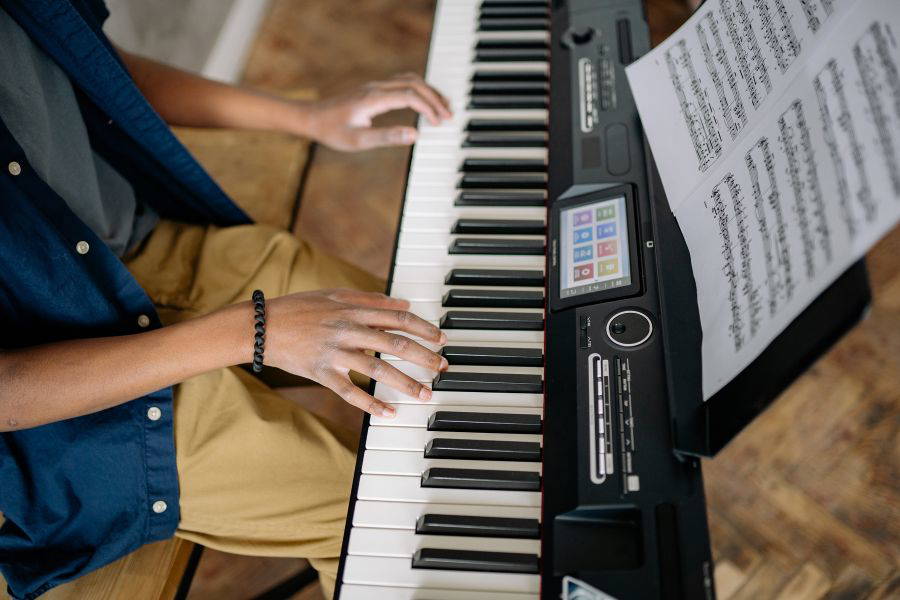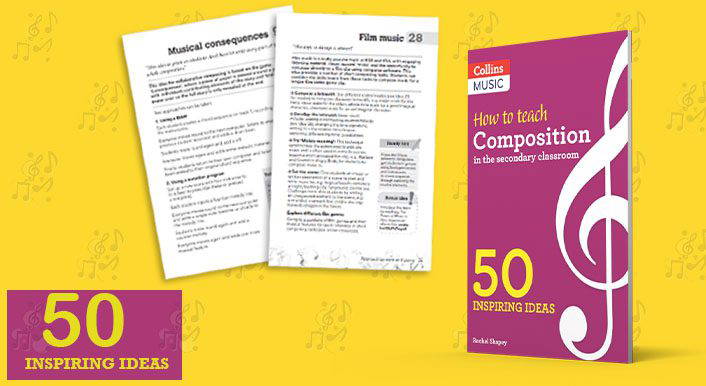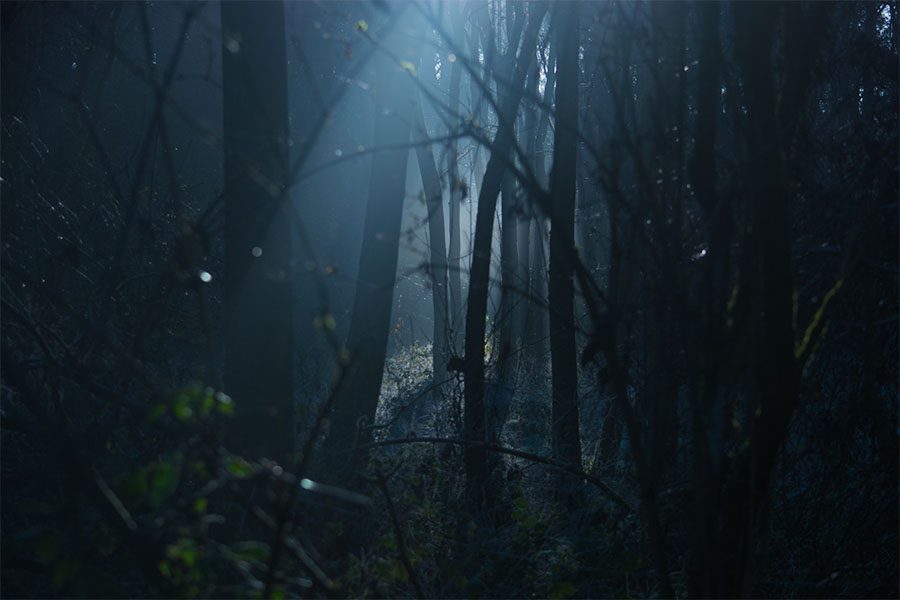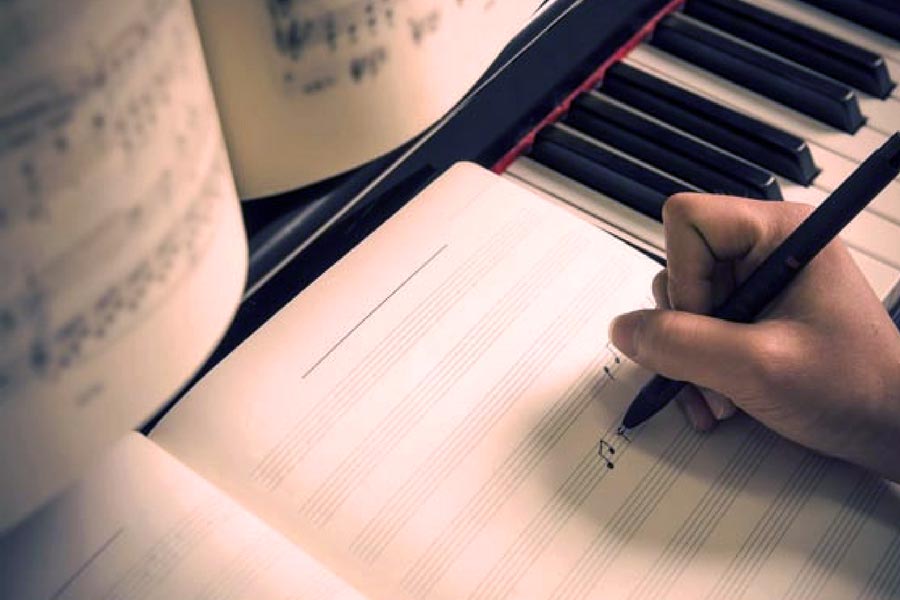Perhaps you’re training to be a music teacher, an ECT or you’re in need of some new ideas and approaches for teaching classroom composing – here are 6 tips to help you get you off to a confident start…
1. What does composing mean to you?
Let’s start with this question to consider: what does composing or composition mean to you?
When I run training sessions for teachers we usually begin with a discussion about the challenges of delivering composing in the classroom. There’s often a sense of relief when the teachers realise that they are not alone in facing a particular problem. These discussions then bring to the fore all sorts of other issues / beliefs / mindsets which impact how they feel about teaching composition. Many of them share that they never did / disliked composing at school themselves, had a poor experience at college/university or had taken a different route which hadn’t included composing. Therefore, it’s no surprise that being expected to lead a class of young people in composing music can be met with trepidation!
You might be at the other end of the spectrum and absolutely love composing but are unsure of how to break it all down in the classroom and effectively share your passion in a level-appropriate way.
It can be helpful to bear these things in mind so that you can address any beliefs or assumptions which may be unhelpful or affect your confidence level. Teaching composing requires a curious and open mind. Through trying different approaches you’ll find your own style and what works with your students.
Find your style
Don’t worry if some of your composing lessons don’t go as planned – learn from them for next time. Once you’ve tried a few different approaches you’ll start to build up a bank of tasks and activities that work well. You can then build on and develop these further.
2. Keep it structured
The nature of composing as a creative activity means that it has the potential to be left open-ended and with an unspecified timeframe. This can lead to pupils getting distracted and lacking clarity on what the expected outcome is. Give a time limit on each task and if it’s a longer project, break it down and provide signposts for when each component should be finished by. Remember that everyone works at different speeds so including extension activities (“If you finish this step, try adding this…”) ensures that pupils are on-task and productive.
This more structured approach can be balanced with some tasks which are more open-ended, allowing opportunity for more freedom and exploration of ideas. Why not build a composing task using our free Inspiration page as a starting point?
Suggested ideas
- Share success criteria with pupils (“Your composition should include…”)
- If working on a larger composing task, consider giving pupils a planning sheet (paper or digital) to record their ideas and help keep track of progress.
- Turn a display board into an extension task or ‘trouble shooter’ board so that if you’re busy helping another pupil when a student needs some guidance, there’s a go-to area where they can find pointers and ideas.
2. Don’t assume anything
When I started my first teaching post I shared two A level Music classes with a colleague. I was assigned the composition component. Most of the students were quite advanced on their instruments and demonstrated a good grasp of technical vocabulary when listening to and analysing music – we were able to have in-depth discussions and explore some fairly complex ideas. I therefore assumed that they would be quite confident when it came to composing. I was wrong! Those first few lessons didn’t go well at all and required a lot of ‘unpicking’ – I aimed too high and we lost direction in those early weeks. On reflection I should have found out what they had covered at GCSE and spent the first couple of lessons on some general ‘diagnostic’ activities to inform my planning for the rest of the term.
Whilst we’re considering assumptions, it’s also useful to think about composing process – don’t assume that students will begin composing in the same way that you do – for example you might think about melody first whilst another musician might be all about the chords or vice versa. Does this change how you think about setting composing tasks? How will you encompass different styles into your activities?
Suggested ideas:
- When meeting a new class spend time finding out what they have already covered – it won’t harm to revisit it and will build confidence, rather than trying to start with something too complex.
- Create a bank of short composing activities so you can see how your students approach it (utter panic / willing to give it a go / cool as a cucumber etc!).
- Have a go yourself at starting a composition with your less-favoured starting point (e.g if you’re usually melody-first, start with a chord sequence or beat pattern) and reflect on the process.
3. Model everything
Just as we would watch a pottery wheel demonstration before having a go or follow a gym teacher doing a zumba routine, our pupils need to see and hear how composing works. They won’t instinctively know how to do it. Most, if not, all, examples that they listen to are complete and finished ‘works’ so it can be difficult for them to consider how these pieces were conceived and developed. We need to show them this through modelling the process.
It can be helpful to create an example prior to the lesson, particularly if you don’t want to compose something spontaneously in front of thirty teenagers! But it is an effective way to show the task and then for pupils to try it for themselves.
Suggested ideas:
- Break the task down step-by-step. Share these steps and demonstrate at the front of the class as you go through each one.
- Involve pupils in the process – ask questions, get them to ask questions and make mistakes so that they can see it’s all part of composing.
- Keep referring back to the steps and demonstration to consolidate learning points and revisit key terms.
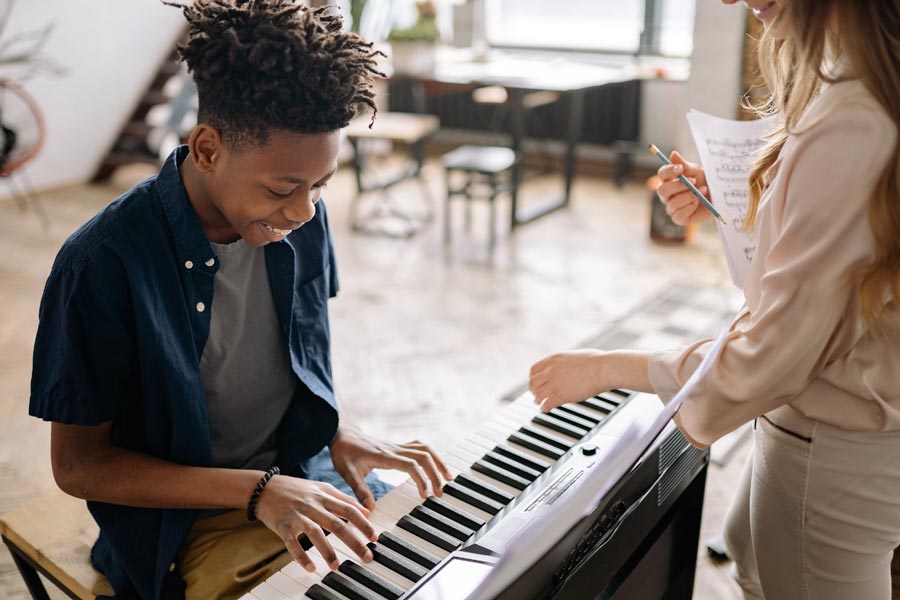
4. Reach out
If you’re new to teaching, you may not have had a great deal of opportunity to observe composing teaching. You might find yourself in a small or solo department, making it more challenging to learn from colleagues. If you can, reach out to other classroom music teachers either locally or online through social media and either start a discussion (“What are your most effective strategies for teaching composing?”) or ask if you can observe a couple of lessons. Making these connections can also be helpful when it comes to moderating GCSE coursework.
It can also be beneficial to book some CPD: in 2022 I delivered two successful in-person CPD events where we explored practical approaches for teaching composing and tried everything out in a safe and friendly environment. This year I’ve been asked by a number of music departments to go in and create a bespoke plan for embedding composing in the curriculum – it’s heartening to see that this is an area being developed and valued in these schools. If this is something you’re interested in exploring further do drop me a line.
Suggested ideas:
- Passing Notes Education offers affordable webinars on GCSE and A level composition, the Music Teachers Association and Music Mark offer CPD events throughout the year.
- Follow James Manwaring’s Music Blog for useful tips, thoughts and discussion.
5. Use an ‘integrated approach’
We can’t look at composing and ignore the other aspects of musical learning (listening, performing and analysing/appraising) for they are all connected! By encouraging pupils to make links between each strand – and making them ourselves – we can go much deeper in our musical understanding and build composing confidence. In my book, ‘How to teach composition in the secondary classroom – 50 inspiring ideas‘ I call this the ‘integrated approach’. So for example, if we’re teaching ‘tension in music’, consider how we might approach this with each strand and how we can link them all together:
- Listening: Danse Macabre by Camille Saint-Saens; Kite in a Hurricane by Thomas Newman
- Analysing: Discuss use of semitones / chromaticism; musical texture, layering sounds; instrumentation.
- Performing: Play part of the listening track on keyboards – physical connection to the chromatic movement just heard. If time, get pupils in small groups to arrange existing material (Kite in a Hurricane works well).
- Composing: Example brief: Compose a 20 second passage to accompany a film clip of an intruder creeping down the stairs of an old, dark house as a storm rages outside…
The main point here is to keep the key terms central and explore them through different ‘lenses’.
6. Power cut contingency
And finally – what would you do if there was a power cut? There can be a tendency to rely upon computers and devices – in fact, I’ve heard from teachers on more than one occasion: “to me, composing = going on computers”. Whilst computers are certainly very useful, they are not essential for composing. It can be a good exercise to ask yourself – how would I teach this effectively if we had a power cut? Sometimes when our regular equipment / resources are unavailable we are forced to think creatively and come up with new solutions. Ask yourself: does this task need to be completed on a computer or is there another way? Could pupils use percussion or other acoustic instruments? What about body percussion or voices? Can pupils work together practically in some way?
And if the power cut did ever happen you don’t need to worry, because you’e got a whole host of ideas up your sleeve!

